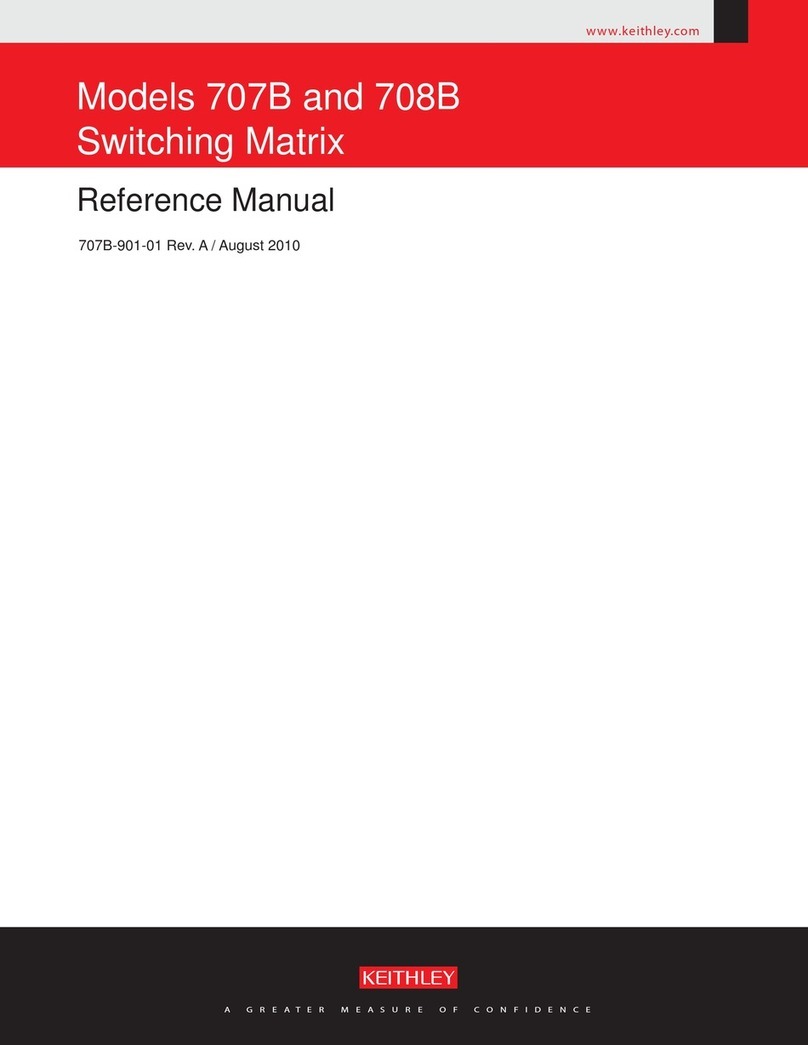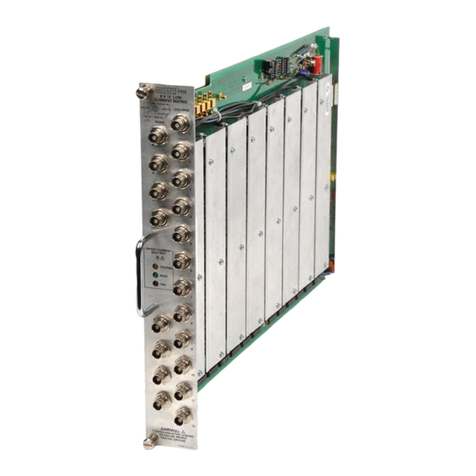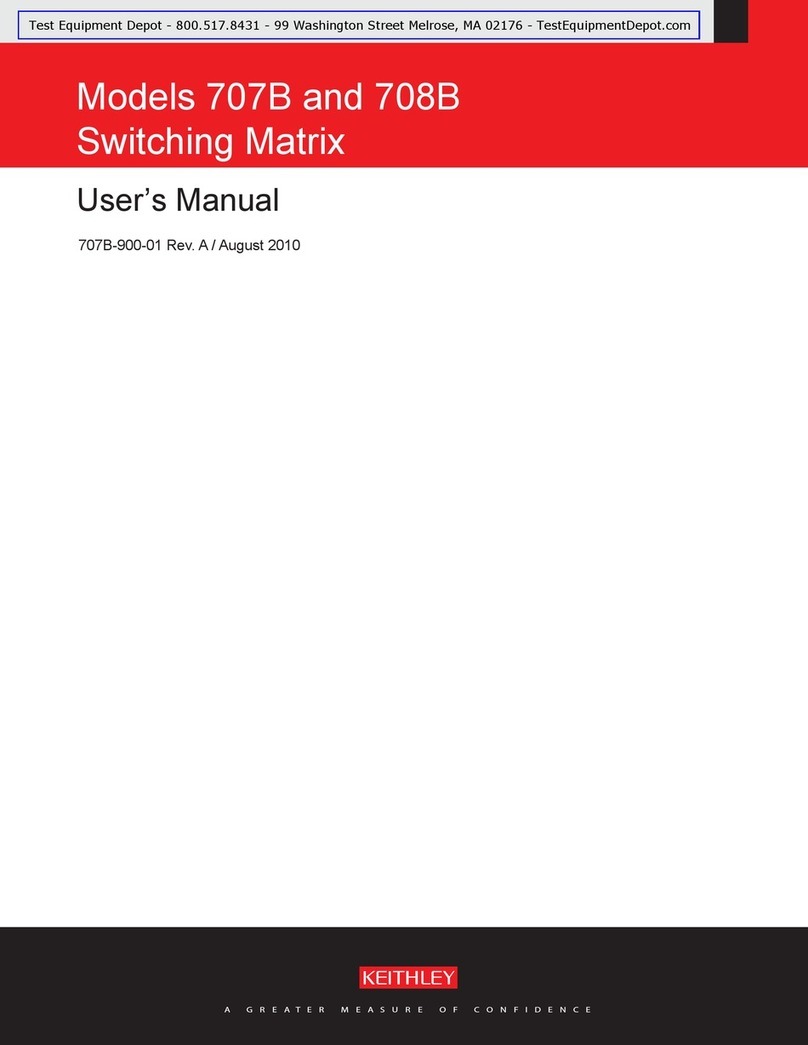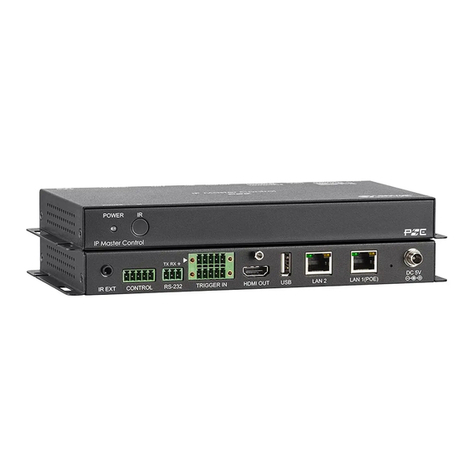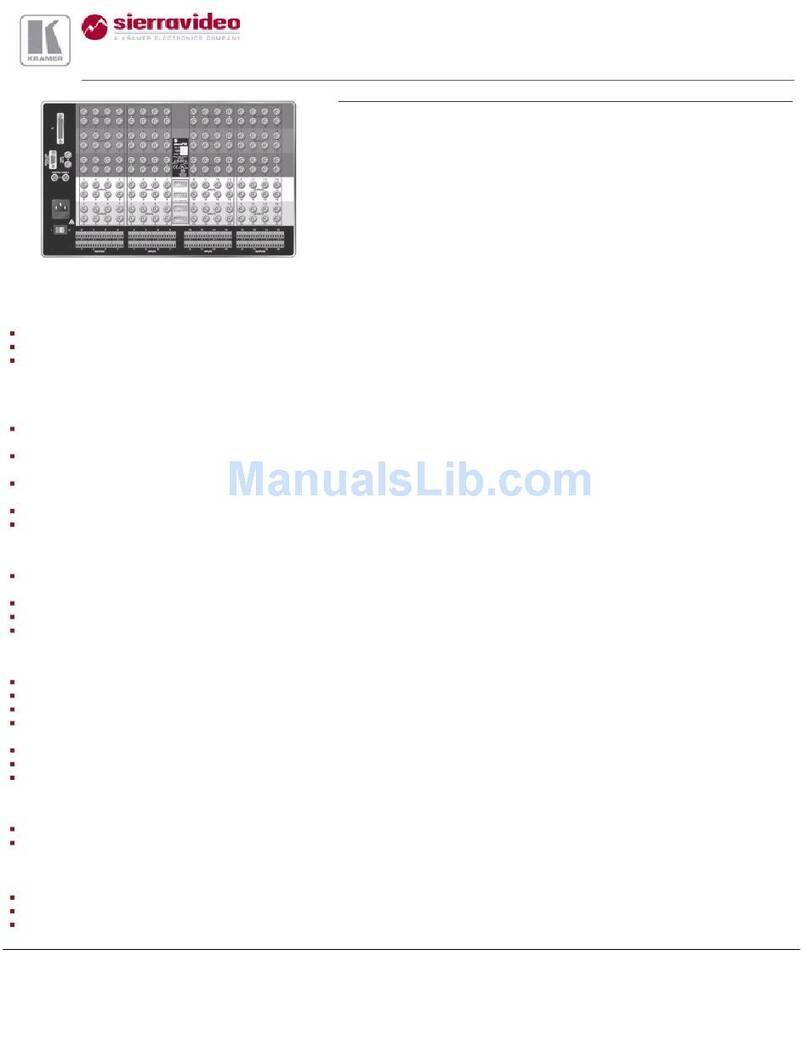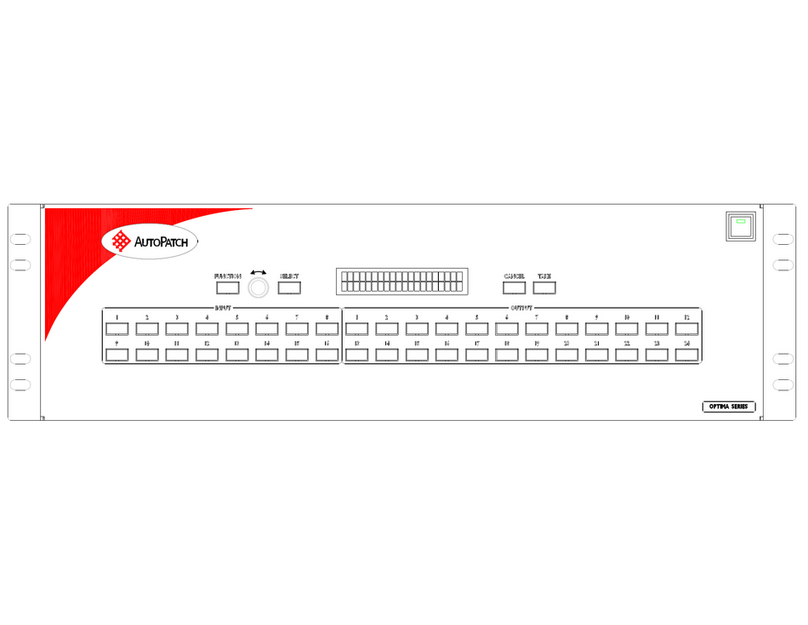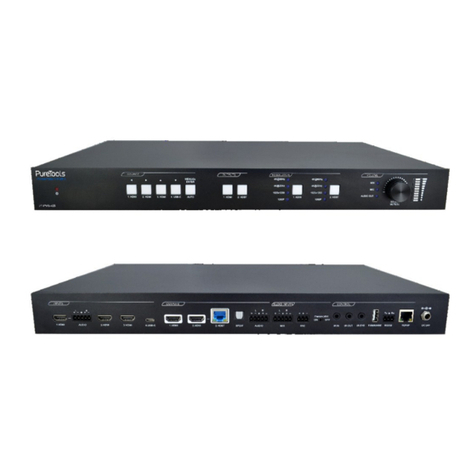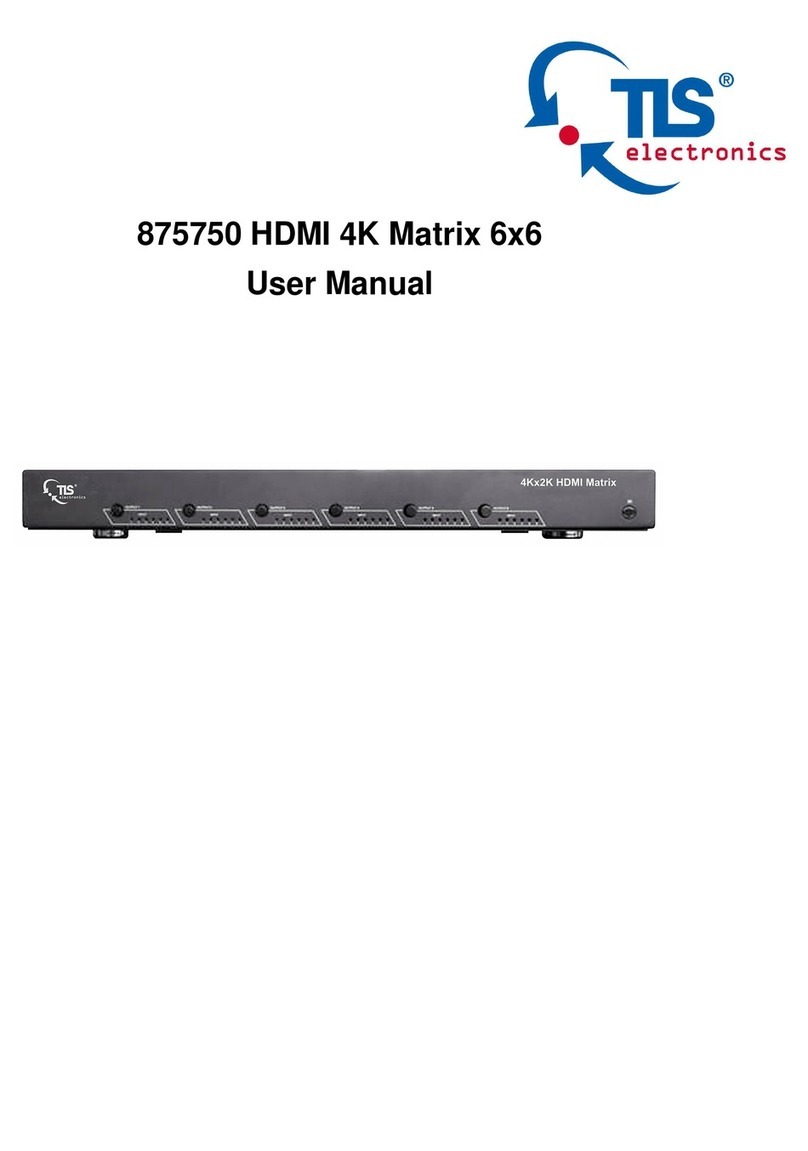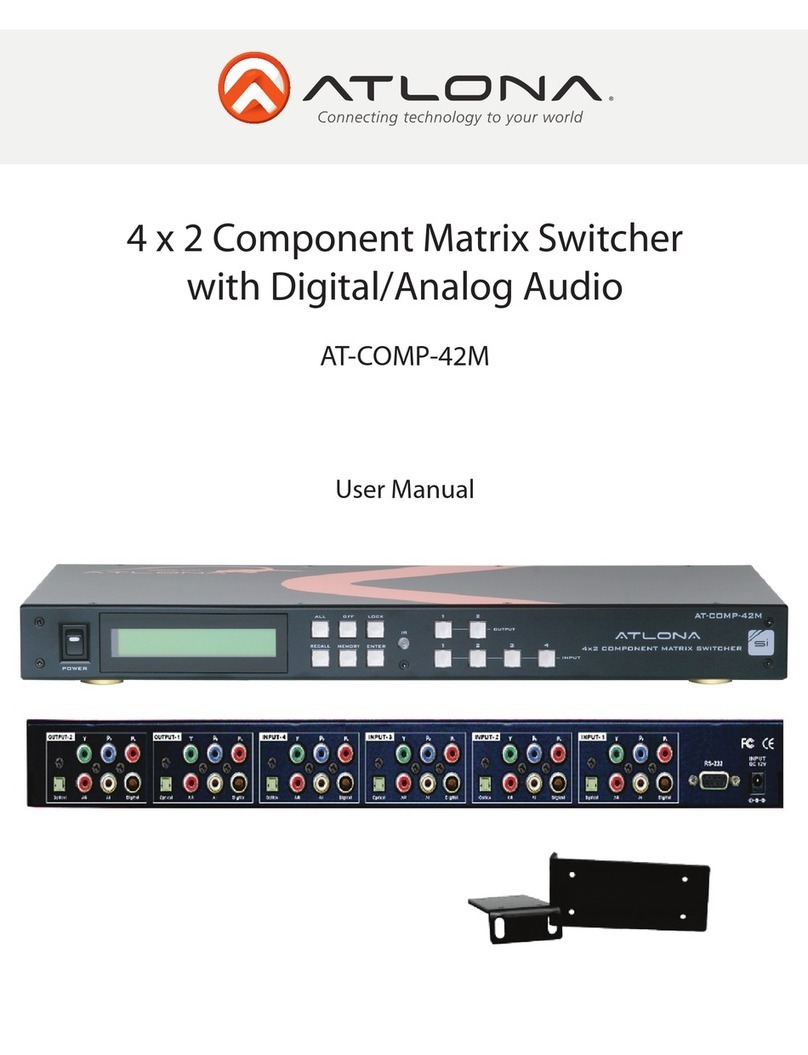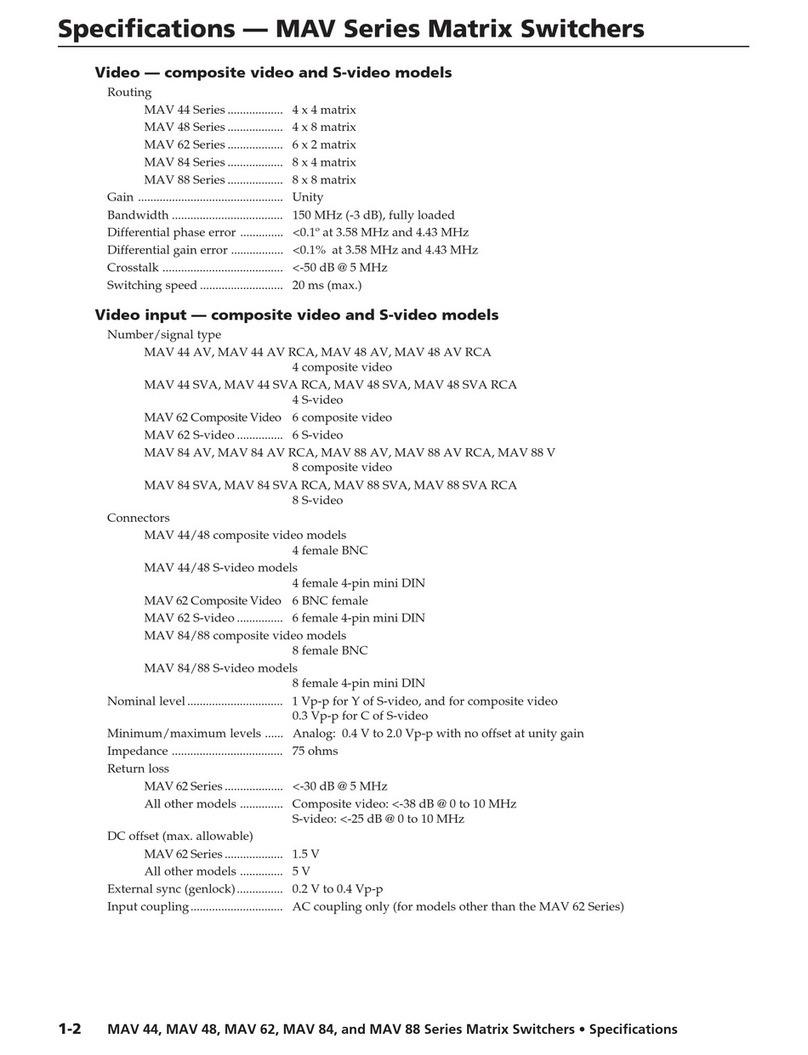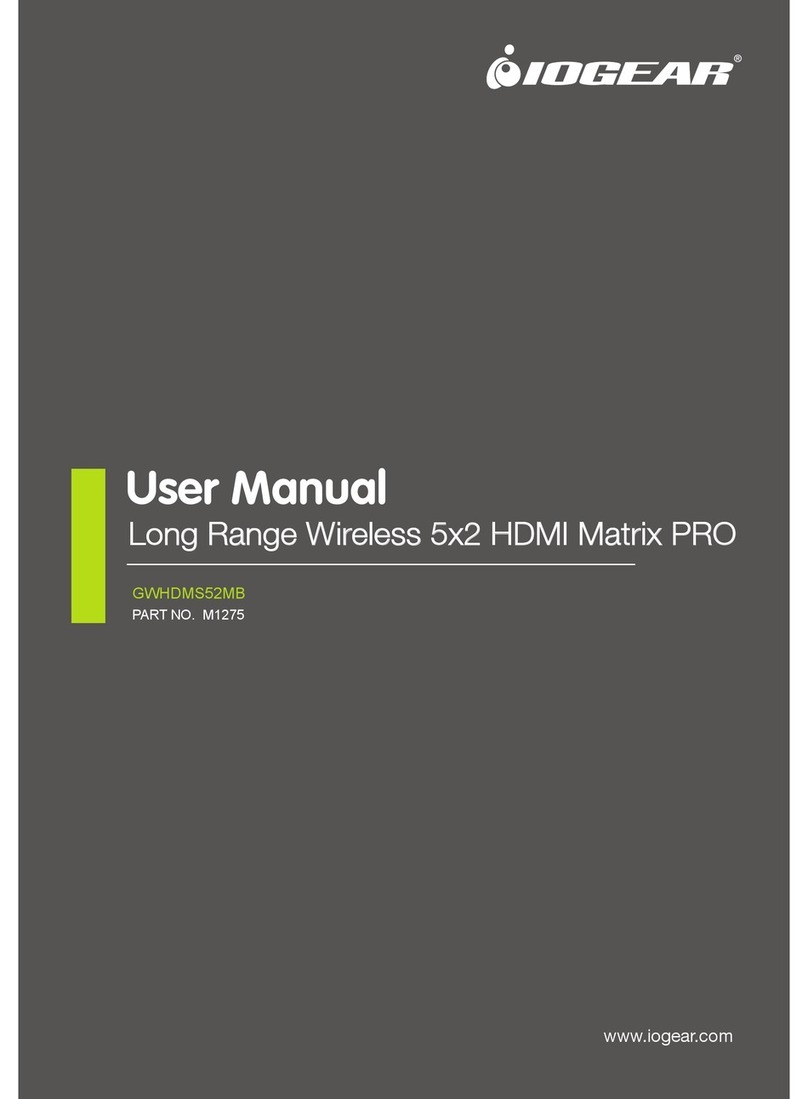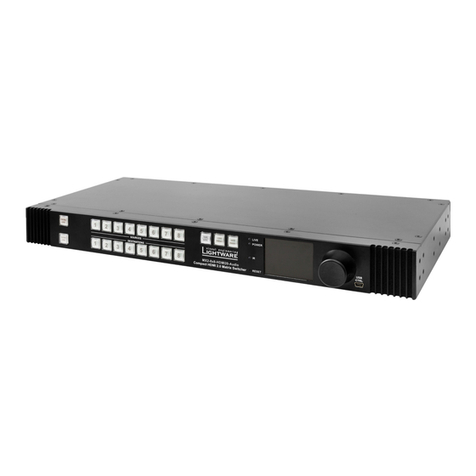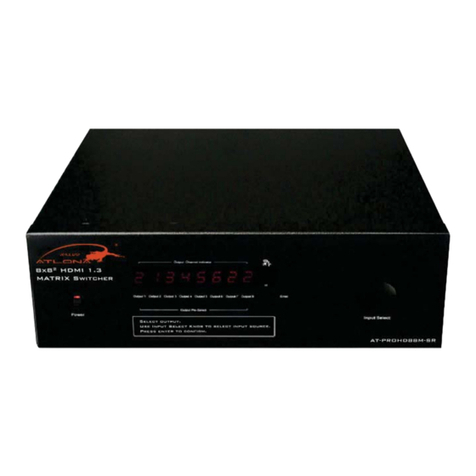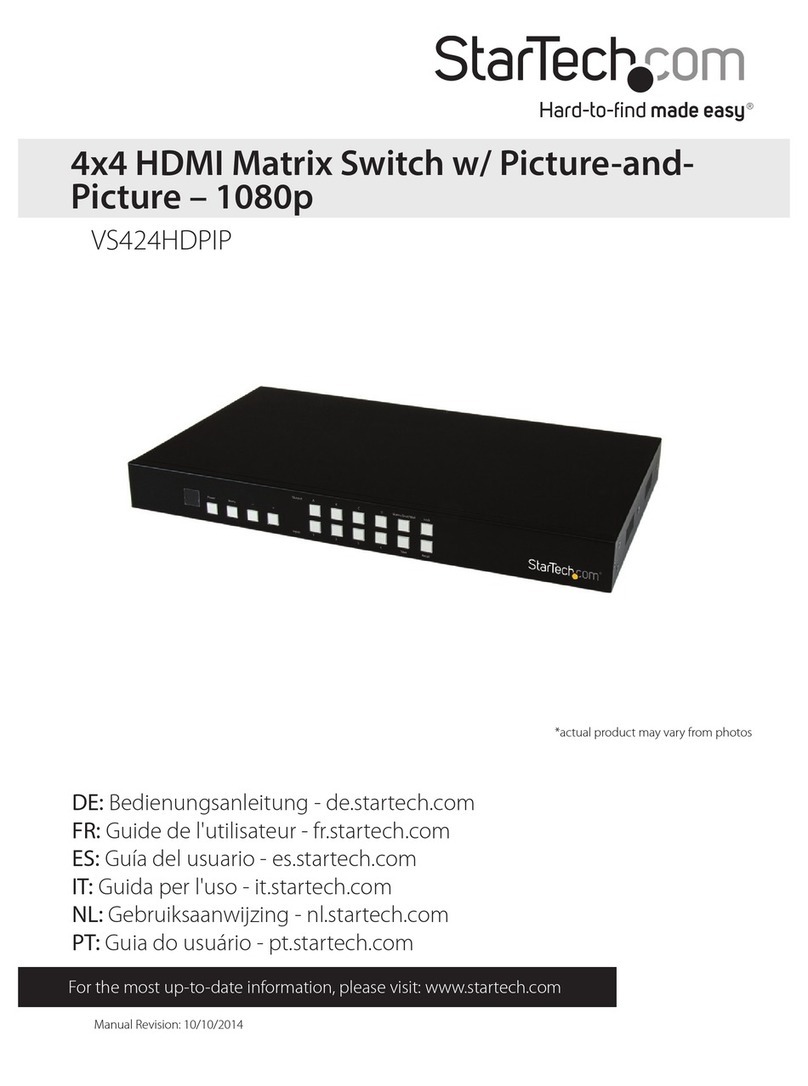Keithley 707A User manual

Model 707A
Switching Matrix
Instruction Manual
Contains Operating and Servicing Information
KEITH LEY
707A-901-01 Rev. A/ 9-98

WARRANTY
Keithley Instruments, Inc. waiTants this product to be free from defects in material and workmanship for aperiod of 1year from date of
shipment.
Keithley Instruments, Inc. warrants the following items for 90 days from the date of shipment: probes, cables, rechargeable batteries,
diskettes, and documentation.
During the warranty period, we will, at our option, either repair or replace any product that proves to be defective.
To exercise this warranty, write or call your local Keithley representative, or contact Keithley headquarters in Cleveland, Ohio. You will
be given prompt assistance and return instructions. Send the product, transportation prepaid, to the indicated service facility. Repairs
will be made and the product returned, transportation prepaid. Repaired or replaced products are warranted for the balance of the origi-
nal warranty period, or at least 90 days.
LIMITATION OF WARRANTY
This warranty does not apply to defects resulting from product modification without Keithley’s express written consent, or misuse of
any product or part. This warranty also does not apply to fuses, software, non-rechargeable batteries, damage from battery leakage, or
problems arising from normal wear or failure to follow instructions.
THIS WARRANTY IS IN LIEU OF ALL OTHER WARRANTIES, EXPRESSED OR IMPLIED, INCLUDING ANY IMPLIED
WARRANTY OF MERCHANTABILITY OR FITNESS FOR APARTICULAR USE. THE REMEDIES PROVIDED HEREIN ARE
BUYER’S SOLE AND EXCLUSIVE REMEDIES.
NEITHER KEITHLEY INSTRUMENTS, INC. NOR ANY OF ITS EMPLOYEES SHALL BE LIABLE FOR ANY DIRECT, INDI-
RECT, SPECIAL, INCIDENTAL OR CONSEQUENTIAL DAMAGES ARISING OUT OF THE USE OF ITS INSTRUMENTS AND
SOFTWARE EVEN IF KEITHLEY INSTRUMENTS, INC., HAS BEEN ADVISED IN ADVANCE OF THE POSSIBILITY OF
SUCH DAMAGES. SUCH EXCLUDED DAMAGES SHALL INCLUDE, BUT ARE NOT LIMITED TO: COSTS OF REMOVAL
AND INSTALLATION, LOSSES SUSTAINED AS THE RESULT OF INJURY TO ANY PERSON, OR DAMAGE TO PROPERTY.
KEITHLEY
Keithley Instruments, Inc. •28775 Aurora Road •Cleveland, OH 44139 *440-248-0400 •Fax: 440-248-6168 •http://www.keithley.com
CHINA;
FRANCE:
GERMANY:
GREAT BRtTAIN:
ITALY:
NETHERLANDS:
SWITZERLAND:
TAIWAN:
Keithley liistruinents China *Yti{m Chen Xin Building, Room 705 •12 Yumin Road, Dewai, Madian •Beijing 100029 •8610-62022886 *Fax: 8610-62022892
Keithley Instruments SARL •BP 60 •3Alice des Garays •91122 Palaiseau Cedex •33- 1-60- 11 -5 1-55 •Fax; 33-1-60-1 1-77-26
Keithley Instruments GmbH •Laiidsberger Strasse 65 •D-821 10 Gemiering, Munich •49-89-8493070 *Fax: 49-89-84930759
Keithley Instruments, Ltd, •The Minster •58 Portman Road •Reading, Berkshire RG30 lEA •44-1189-596469 •Fax: 44-1 189-575666
Keithley Instruments SRL •Viale S. Gimignano 38 •20146 Milano •39-2-48303008 •I^x: 39-2-48302274
Keithley Instruments BV *Avelingen West 49 •4202 MS Gorinchein •31-(0) 183-635333 *Fax: 31 -(0)1 83-63082
1
Keithley Instruments SA 'Kriesbachstrasse 4»8600 Diibendorf •41-1-8219444 »Fax: 41-1-8203081
Keithley Instruments Taiwan •1FL., 85 Po Ai Street •Hsinebu, Taiwan •886-35-778462 •Fax: 886-35-778455

Model 707A Switching Matrix
Instruction Manual
©1998, Keithley Instruments, Inc.
All rights reserved.
Cleveland, Ohio, U.S.A.
First Printing, September 1998
Document Number: 707A-901-01 Rev. A

Manual Print History
The print history shown below lists the printing dates of all Revisions and Addenda created for this manual. The Revision
Level letter increases alphabetically as the manual undergoes subsequent updates. Addenda, which are released between Revi-
sions, contain important change information that the user should incorporate immediately into the manual. Addenda are num-
bered sequentially. When anew Revision is created, all Addenda associated with the previous Revision of the manual are
incorporated into the new Revision of the manual. Each new Revision includes arevised copy of this print history page.
Revision A(Document Number 707A-90I~0i) September 1998
All Keith!ey product name.s are trademarks or registered trademarLs of Keithley Insti-uments, Inc.
Other brand and product namCvS are trademarks or registered trademarks of their respective holders.

Safety Precautions
The following safety precautions should be observed before using
this product and any associated instrumentation. Although some in-
struments and accessories would normally be used with non-haz-
ardous voltages, there are situations where hazardous conditions
may be present.
This product is intended for use by qualified personnel who recog-
nize shock hazards and are familiar with the safety precautions re-
quired to avoid possible injury. Read the operating information
carefully before using the pnxluct.
The types of product users are;
AXk7 VV/t ILilC Uv>C
and maintenance of equipment, and for ensuring that operators are
adequately trained.
Operators use the product for its intended fonction. They must be
trained in electrical safety procedures and proper use of the instm-
ment. They must be protected from electric shock and contact with
hazardous live circuits.
Maintenance personnel perform routine procedures on the product
to keep it operating, for example, setting the line voltage or replac-
ing consumable materials. Maintenance procedures are described in
the manual. The procedures explicitly state if the operator may per-
form them. Otherwise, they should be performed only by service
personnel.
Service personnel are trained to work on live circuits, and perform
safe installations and repairs of products. Only properly trained ser-
vice personnel may perform installation and service procedures.
Exercise extreme caution when ashock hazard is present. Lethal
voltage may be present on cable connectorjacks or test fixtures. The
American National Standards Institute (ANSI) states that ashock
hazard exists when voltage levels greater than 30V RMS, 42.4V
peak, or 60VDC are present. Agood safety practice is to expect
that hazardous voltage is present in any unknown circuit before
measuring.
Users of this product must be protected from electric shock at all
times. The responsible body must ensure that users are prevented
access and/or insulated from every connection point. In some cases,
connections must be exposed to potential human contact. Product
users in these circumstances must be trained to protect themselves
from the risk of electric shock. If the circuit is capable of operating
at or above 1000 volts, no conductive part of the circuit may be
exposed.
As described in the International Electrotechnical Commission
(lEC) Standard lEC 664, digital multimeter measuring circuits
(e.g., Keithley Models 175A, 199, 2000, 2001, 2002, and 2010)
incssuring circuits src Instslltition Category H. Ail other instru-
ments’ signal terminals are Installation Category Iand must not be
connected to mains.
Do not connect switching cards directly to unlimited power circuits.
They are intended to be used with impedance limited sources.
NEVER connect switching cards directly to AC mains. When con-
necting sources to switching cards, install protective devices to lim-
it ftiult current and voltage to the card.
Before operating an instrument, make sure the line cord is connect-
ed to aproperly grounded power receptacle. Inspect the connecting
cables, test leads, and jumpers for possible wear, cracks, or breaks
before each use.
For maximum safety, do not touch the product, test cables, or any
other instruments while power is applied to the circuit under test.
ALWAYS remove power from the entire test system and discharge
any capacitors before: connecting or disconnecting cables or jump-
ers, installing or removing switching cards, or making internal
changes, such as installing or removing jumpers.
Do not touch any object that could provide acurrent path to the
common side of the circuit under test or power line (earth) ground.
Always make measurements with dry hands while standing on a
dry, insulated surface capable of withstanding the voltage being
measured.

Do not exceed the maximum signal levels of the instruments and ac-
cessories, as defined in the specifications and operating informa-
tion, and as shown on the instniment or test fixture panels, or
switching card.
When fuses are used in aproduct, replace with same type and rating
for continued protection against fire hazard.
Chassis connections must only be used as shield connections for
measuring circuits, NOT as safety earth ground connections.
If you are using atest fixture, keep the lid closed while power is ap-
plied to the device under test. Sale operation requires the use of a
lid interlock.
If ascrew is present, connect it to safety earth ground using the
wire recommended in the user documentation.
The /K symbol on an instrument indicates that the user should re-
fer to the operating instructions located in the manual.
The /f\ symbol on an instrument shows that it can source or mea-
sure 1000 volts or more, including the combined effect of normal
and common mode voltages. Use standard safety precautions to
avoid personal contact with these voltages.
Instrumentation and accessories shall not be connected to humans.
Before performing any maintenance, disconnect the line cord and
all test cables.
To maintain protection from electric shock and fire, replacement
components in mains circuits, including the power transformer, test
leads, and input jacks, must be purchased from Keithley Instru-
ments. Standard fuses, with applicable national safety approvals,
may be used if the rating and type are the same. Other components
that are not safety related may be purchased from other suppliers as
long as they are equivalent to the original component. (Note that se-
lected parts should be purchased only through Keithley Instruments
to maintain accuracy and functionality of the product.) If you are
unsure about the applicability of areplacement component, call a
Keithley Instruments office for information.
To clean the instrument, use adamp cloth or mild, water based
cleaner. Clean the exterior of the instrument only. Do not apply
cleaner directly to the instrument or allow liquids to enter or spill
on the instrument.
The WARNING heading in amanual explains dangers that might
result in personal injury or death. Always read the associated infor-
mation very carefully before performing the indicated procedure.
The CAUTION heading in amanual explains hazards that could
damage the instrument. Such damage may invalidate the warranty.

707ASwitching Matrix Specifications
Overview
CAPACITY: Six plug-in cards per mainframe.
EXI'ANSION CAPACITY: Daisy-Chain expansion of up to four Slave units with one
Master unit.
ANAf.OG BACKPf..ANES: Backplanes provide automatic row expansion between
similar cards within one mainframe.
DISPLAY: 1.4-segment aiplianumeric LED display, plus individual status LEDs.
MEMORY: Storage for 100 matrix setups, lithium battery backup.
PROGRAMMED SE TTING TIME: 0to 65 seconds in 1ms increments.
FRONT PANE!, MENU: Digital I/O: External Trigger edge; Matrix Ready level; Master/
Slave operation; IEEE-488 address; Relay Settling Time; Self Test; Card Identify;
factory defaults.
TRIGGER SOURCES: Externan’rigger (TTL compatible, programmable edge, 600ns
minimum pulse width); IEEE-488 bus (TALK, GET, "X”); manual.
STATUS OUTPUT: Matrix Ready (TTL compatible, programmable high or low true);
goes false when relays are switched, true at end of Programmed Settling Time.
MAKE BEFORE BREAK, BREAK BEFORE MAKE: Programmable by row.
LIGHT PEN OPTION: Controls crosspoints, memories, make before break and break
before make. One light pen controls Master and all Slaves.
Execution Speed
MAXIMUM TRIGGER RATE: 200 setups per second (stepping through previously
stored setups with make-before-breafc and break-before-make disabled).
TRIGGER RESPONSE TIME:
ExternalTVigger: <lms.
IEEE-488 GET: <lms.
RESPONSE TO IEEE-488 COMMAND (to close asingle relay, excluding relay settling
time):
Stand Alone: <15ms.
Master and Four Slaves: <55ms.
DOWNLOADTIME (one setup to 707A):
Stand Alone: 60ms typical.
IEEE-488 BUS IMPLEMENTATION
MULTILINE COMMANDS: DCL, LLO. SDC, GET, GTL, UNT, UNL, SPE, SPD
UNILINE COMMANDS: IFC, REN, EOI, SRQ, ATN.
INTERFACE FUNCTIONS: SHI, AH1,T6,TE0, L4, LEO, SRI, RLl, PTO, DCl, DTI. CO, El.
PROGRAMMABLE PARAMETERS: All parameters programmable except for IEEE-
488 bus address and Master/ Slave operating mode.
GENERAL
DIGITAL I/O (ITL compatible):
Data: 8inputs, 8outputs.
Control: Input Latch, Output Strobe.
REAR PANEL CONNECTORS:
Two BNC: External Trigger, Matrix Ready.
OneDB-25: Digital I/O.
IWo 8-pin DIN: Mater/Slave In, Mater/Slave Out.
One 6-pin Screw Terminal Plug: RelayTest.
ENVIRONMENTAL:
Operating: 0to 50 C.
Storage: -25 to 65 C,
POWER: 100 to 240 VAC, 50-60HZ, 250VA maximum.
REIAY DRIVE: 5A minimum per card (slot).
EMC: Conforms with European Union Directive 89/336/EEC EN 5501 1,
EN 50082-1, EN 61000-3-3, FCC part 15 class B.
SAFE'IY: Conforms with European Union Directive 73/23/EEC EN 61010-1.
PHYSICAL: 356mm high x432mmwide x574mm deep (14 in x17 in x22.6 in). Net
weight without cards 16.5kg (36 lbs).
ACCESSORIES SUPPLIED: Instruction manual, power line cord, relay test
connector, fixed rack mounting hardware.
ACCESSORIES AVAILABLE:
Model 7078-PEN: Programming Light Pen (includes holder)
Model 7079: Slide Rack Mounting Kit
Model 7078-DlN; 8-pin DIN cable (Master/ Slave), L8m (6ft.)
Specifications are subject to change without notice.

Table of Contents
1General Information
1.1 Introduction 1-1
1.2 Features 1-1
1.3 Warranty information 1-1
1.4 Manual addenda 1-1
1.5 Safety symbols and terms 1-2
1.6 Specifications 1-2
1.7 Unpacking and inspection 1-2
1.7.1 Inspection for damage 1-2
1.7.2 Shipment contents 1-2
1.8 Repacking for shipment 1-2
1.9 Optional accessories 1-2
2Card Installation
2.1 Installing and removing cards 2-1
3Getting Started
3.1 Introduction 3-1
3.2 Front panel familiarization 3-1
3.3 Rear panel familiarization 3-6
3.4 Card connections 3-8
3.5 Expanding matrix size 3-10
3.5.1 Single unit expansion 3-10
3.5.2 Multiple unit expansion 3-16
3.5.3 System expansion issues 3-20
3.5.4 Documenting system configuration 3-20
3.6 Basic switching operation 3-22
3.6.1 Power-up 3-22
3.6.2 Selecting make/break and break/make rows 3-22
3.6.3 Modifying arelay setup 3-22
3.6.4 Storing setup and sending to relays 3-23

4Operation
4. iIntroduction 4-
1
4.2 Setup data paths 4-1
4.3 Power-up procedure 4-2
4.3.1 Line voltage selection 4-2
4.3.2 Line power connections 4-2
4.3.3 Power switch 4-2
4.3.4 Power-up self-test and messages 4-2
4.3.5 Power-up configuration 4-3
4.3.6 Master/slave power-up 4-4
4.4 Displays and messages 4-4
4.4. 1Alphanumeric display 4-4
4.4.2 Display messages 4-5
4.4.3 IEEE-488 status indicators 4-6
4.4.4 Crosspoint display LEDs 4-6
4.4.5 Make/break and break/make LEDs 4-8
4.4.6 Light pen 4-8
4.5 Selecting crosspoint display 4-10
4.6 Modifying crosspoint display 4-10
4.7 Copying crosspoint display 4- 1
1
4.8 Inserting and deleting stored setups 4-12
4.9 Menu operations 4-12
4.9.1 Digital I/O 4-14
4.9.2 External trigger 4-14
4.9.3 Matrix ready 4-15
4.9.4 Stand-alone and master/slave 4-16
4.9.5 IEEE-488 bus address 4-17
4.9.6 Relay (hardware) settling times 4-18
4.9.7 Card labels 4-18
4.9.8 Self-test 4-18
4.9.9 Factory defaults 4-18
4.10 Selecting switching parameters 4-19
4.10.1 Programmed settling time 4-19
4.10.2 Make/break and break/make rows 4-19
4. 1 1 Triggering 4-20
4.11.1 Trigger sources 4-20
4.11.2 Front panel triggering 4-21
4.11.3 Trigger overrun conditions 4-21
4. 1 1 .4 External trigger input 4-25
4.11.5 Matrix ready output 4-25
4. 11.6 IEEE-488 bus triggering 4-25
4.12 Re.setting 4-25
ii

5IEEE-488 Programming
5.1
5.2
5.3
5.4
5.5
5.6
5.7
5.7.1
5.7.2
5.7.3
5.7.4
5.8
5.8.1
5.8.2
5.8.3
5.8.4
5.8.5
5.8.6
5.8.7
5.8.8
5.8.9
5.9
5.9.1
5.9.2
5.9.3
5.9.4
5.9.5
5.9.6
5.9.7
5.9.8
5.9.9
5.9.10
5.9.11
5.9.12
5.9.13
5.9.14
5.9.15
5.9.16
5.9.17
5.9.18
5.9.19
5.9.20
5.9.21
5.9.22
5.9.23
5.9.24
5.9.25
5.9.26
5.9.27
5.10
5.11
Introduction
IEEE-488 quick start
Bus cable connections
Interface function codes
Primary address programming
QuickBASIC programming
Front panel aspects of IEEE-488 operation
Front panel error messages
Status indicators
Local key
Concurrent front panel and bus operation ....
General bus command prognunming
Overview
REN (remote enable)
IFC (interface clear)
LLO (local lockout)
GTL (go to local)
DCL (device clear)
SDC (selective device clear)
GET (group executive trigger)
SPE, SPD (serial polling)
Device-dependent command (DDC) programming
Overview
A—External trigger
B—Matrix ready
C—Close crosspoint
D_Display
E—Edit pointer
F—Enable/disable triggers
G—Data format
H—Hit key
I—Insert blank setup
J—Self-test
K—EOI and hold-off
L—Download setups
M—SRQ and serial poll byte
N—Open crosspoint
O—Digital output
P—Clear crosspoints
Q—Delete setup
R—Restore defaults
S—Programmed settling time
T—Trigger
U—Status
VMake/break
W—Break/make
X—Execute
Y—Terminator
Z—Copy setup
Relay command combinations
Timing considerations
.5-1
.5-1
,. 5-3
,. 5-5
.5-6
.5-7
.5-8
.5-8
.5-9
5-10
5-10
5-10
5-10
5-10
5-11
5-11
5-11
5-11
5-11
5-1
1
5-11
5-12
5-12
5-16
.5-17
5-18
5-18
5-19
5-19
5-20
5-25
5-26
5-26
5-26
5-27
5-28
5-30
5-30
5-31
5-31
5-32
5-32
5-33
5-34
5-39
5-39
5-40
5-41
5-41
5-42
5-43

6Principles of Operation
6.1 Introduction 6-1
6.2 Overall function description 6-1
6.3 Microcomputer 6-1
6.3.1 Reset circuit 6-1
6.3.2 Address decoding 6-2
6.3.3 Memory 6-4
6.4 Relay control circuitry 6-4
6.4.1 Switching card interface 6-6
6.4.2 Switching card logic 6-6
6.5 Display circuitry 6-10
6.5.1 Display data 6-13
6.5.2 Front panel keys 6-13
6.5.3 Display interface 6-13
6.5.4 Refresh display/read keyboard 6-14
6.6 Light pen interface 6-14
6.7 Master/slave circuitry 6-15
6.7.1 Serial communication 6-15
6.7.2 Control signals 6-17
6.8 Digital I/O 6-17
6.9 IEEE-488 bus interface 6-17
6.10 Power supply 6-19
7Maintenance
7.1 Introduction 7-1
7.2 Line voltage sensing 7-1
7.3 Fuse replacement 7-2
7.4 Fixed rack installation 7-2
7.5 Disassembly 7-5
7.6 Backplane jumpers 7-7
7.7 Battery replacement 7-9
7.8 Static-sensitive devices 7-9
7.9 Mainframe troubleshooting 7-9
7.9.1 Recommended test equipment 7-10
7.9.2 Power-up self-test 7-10
7.9.3 Power supply checks 7-10
7.9.4 Digital board checks 7-10
7.9.5 Display board checks 7-14
7.10 Using an extender card 7-16
7.11 Cleaning 7-16
7.11.1 Backplane 7-16
7.11.2 Fan filter 7-16
8Replaceable Parts
8.1 Introduction 8-1
8.2 Parts lists 8-1
8.3 Ordering information 8-1
8.4 Factory service 8-1
8.5 Component layouts and schematics 8-1
IV

ACard Configuration Worksheet
BIEEE-488 Bus Overview
B.l Introduction B-1
B.2 Bus description B-1
B.3 Bus lines B-3
B.3.1 Data lines B-3
B.3.2 Bus management lines B-3
B.3.3 Handshake lines B-3
B.4 Bus commands B-4
B.4.1 Uniline commands B-4
B.4.2 Universal multiline commands B-5
B.4.3 Addressed multiline commands B-5
B.4.4 Address commands B-5
B.4.5Unaddress commands B-5
B.4.6 Command codes B-5
B.4.7 Typical command sequences B-7
B.4.8 IEEE command groups B-7
B.5 Interface function codes B-8
V

List of Illustrations
2Card Installation
Figure 2-1 Installing amatrix card 2-2
3Getting Started
T"!* O4
Figure 3-
1
Figure 3-2
Figure 3-3
Figure 3-4
Figure 3-5
Figure 3-6
Figure 3-7
Figure 3-8
Figure 3-9
Figure 3-10
Figure 3-11
Figure 3-12
Figure 3-13
Figure 3- 14
Figure 3-15
Model 707A front panel
Setup data transfers
Model 707Arear panel
Connecting instruments to rows
Connecting instruments to columns
Backplane buses
Backplane expansion of analog bus #1
Backplane expansion of analog bus #2
Backplane expansion of analog bus #3
Row connection examples
Example of partial matrix expansion
Model 7071 row connections of stand-alone units
Example of master/slave interconnect cables
Master/slave column locations
Example of master/slave row expansion
.3-2
.3-3
.3-7
.3-8
.3-9
3-10
3-11
3-12
3-13
3-14
3-15
3-16
3-17
3-18
3-19
4Operation
Figure 4-1 Paths for relay setup data 4-1
Figure 4-2 Alphanumeric display 4-4
Figure 4-3 Crosspoint display 4-7
Figure 4-4 Light pen 4-9
Figure 4-5 Crosspoint display keys 4-10
Figure 4-6 Data entry keys 4- 1
1
Figure 4-7 Memory keys 4-12
Figure 4-8 Digital I/O port 4-14
Figure 4-9 Rear panel BNCjacks 4-14
Figure 4-10 Sample external trigger pulses 4-15
Figure 4- 11Sample matrix ready pulses 4-15
Figure 4-12 Master/slave connectors 4-16
Figure 4-13 IEEE-488 bus connector 4-17
Figure 4-14 Switching keys 4-19
Figure 4-15 Trigger keys 4-20
Figure 4-16 Timing without make/break or break/make rows 4-22
Figure 4-17 Timing with either make/break or break/make rows 4-23
Figure 4-18 Timing with both make/break and break/make rows 4-24
vii

5IEEE-488 Programming
Figure 5-1 Flowchart of example program 5-2
Figure 5-2 IEEE-488 connector 5-3
Figure 5-3 IEEE-488 connections 5-3
Figure 5-4 IEEE-488 connector location 5-4
Figure 5-5 Contact assignments 5-5
Figure 5-6 IEEE-488 indicators 5-9
Figures-? LOCAL key 5-10
Figure 5-8 External trigger pulse 5-16
Figure 5-9 Matrix ready pulse 5-17
Figure 5-10 GO and G1 full output formats 5-22
Figure 5-11 G2 and G3 inspect output formats 5-23
Figure 5-12 G4 and G5 condensed output formats 5-23
Figure 5-13 G6 and G7 binary output formats 5-24
Figure 5-14 SRQ mask and serial poll byte format 5-28
Figure 5-15 READY and MATRIX READY signal timing 5-33
Figure 5-16 UO machine status word 5-35
Figure 5-17 U1 error status word 5-35
Figure 5-18 U3 relay step pointer 5-36
Figure 5-19 U4 number of slaves 5-37
Figure 5-20 U5 card identification 5-37
Figure 5-21 U6 relay settling time 5-37
Figure 5-22 U7 digital input 5-38
Figure 5-23 U8 relay test input 5-38
6Principles of Operation
Figure 6-1 Model 707Ablock diagram 6-2
Figure 6-2 Digital board block diagram 6-3
Figure 6-3 RAM and battery backup 6-5
Figure 6-4 Switching card interface simplified schematic 6-7
Figure 6-5 Switching card interface timing diagram 6-8
Figure 6-6 Typical switching card logic block diagram 6-8
Figure 6-7 IDDATA timing diagram 6-9
Figure 6-8 Display board diagram 6-1
1
Figure 6-9 Display interface simplified schematic 6-13
Figure 6-10 Light pen interface simplified schematic 6-14
Figure 6-11 Master/slave interface simplified schematic 6-16
Figure 6-12 Digital I/O interface simplified schematic 6-18
7Maintenance
Figure 7-1 Captive nut installation *7-3
Figure 7-2 Nut bar on flange 7-3
Figure 7-3 Chassis support sizing 7-4
Figure 7-4 Chassis support assembly 7-4
Figure 7-5 Right side view of disassembly 7-5
Figure 7-6 Front view of disassembly 7-6
Figure 7-7 Backplane jumpers 7-8
Figure 7-8 Troubleshooting programs 7-14
Figure 7-9 Relay control waveforms 7-15
Figure 7-10 Display interface waveforms 7-15
viii

BIEEE-488 Bus Overview
Figure B-1 IEEE-488 bus configuration B-2
Figure B-2 IEEE-488 handshake sequence B-3
Figure B-3 Command codes B-6
IX

List of Tables
3Getting Started
Table 3-1 Row-column and column-column paths 3-9
Table 3-2 Matrix and multiplexer cards 3-13
Table 3-3 Model 707Aexternal expansion cables 3-15
Table 3-4 Response time comparisons 3-20
Table 3-5 Model 707Acard configuration 3-21
4Operation
Table 4-1 Setup data paths 4-2
Table 4-2 Power-up, reset, and factory defaults 4-3
Table 4-3 Error messages 4-5
Table 4-4 Information messages 4-6
Table 4-5 Menu operations 4-13
Table 4-6 Status of slave unit controls 4-17
Table 4-7 Make/break and break/make front panel operation 4-20
Table 4-8 Front pane! messages for trigger sources 4-20
5IEEE-488 Programming
Table 5-1 Sample strings 5-2
Table 5-2 Contact assignments 5-5
Table 5-3 Model 707A interface function codes 5-6
Table 5-4 Basic IEEE-488 statements 5-7
Table 5-5 Front panel IEEE-488 error messages 5-8
Table 5-6 General bus commands/BASIC statements 5-11
Table 5-7 Factory default, power-up, and DCL/SDC conditions 5-12
Table 5-8 Order of command execution 5-13
Table 5-9 DDC summary 5-14
Table 5-10 Master/slave setup example 5-21
Table 5-11 Byte counts for data format 5-22
Table 5-12 Typical transmission and hold-off times —stand-alone 5-44
Table 5-13 Typical transmission and hold-off times —master and one slave 5-45
6Principles of Operation
Table 6-1 Display segment assignments 6-12
XI

7Maintenance
Table 7-1 Line fuse values 7-2
Table 7-2 Fixed rack parts 7-2
Table 7-3 Recommended troubleshooting equipment 7-10
Table 7-4 Power supply checks 7-10
Table 7-5 Microcomputer checks 7-11
Table 7-6 Relay control checks 7-1
1
Table 7-7 Display interface checks 7-12
Table 7-8 Digital I/O checks 7- 1
2
Table 7-9 Light pen checks 7-13
Table 7- 10 Master/slave checks 7-13
Table 7- 11 Display board checks 7-14
8Replaceable Parts
Table 8- 1Digital board assembly 8-2
Table 8-2 Display board assembly 8-3
Table 8-3 Backplane assembly 8-3
Table 8-4 Voltage regulator assembly 8-3
Table 8-5 Chassis assembly 8-4
Table 8-6 Miscellaneous 8-4
B
Table B-1
Table B-2
Table B-3
Table B-4
Table B-5
Table B-6
IEEE-488 bus command summary
Hexadecimal and decimal command codes
Typical addressed command sequence
Typical common command sequence
IEEE command groups
Model 707A interface function codes
B-4
B-5
B-7
B-7
B-7
B-8

General Information
1.1 Introduction
This section contains general information about the Model
707A Switching Matrix. The Model 707A is designed as a
programmable switch for connecting signal paths in amatrix
topology. It is for applications requiring alarge-scale matrix
(up to 576 crosspoints per mainframe and 2880 crosspoints
per master/slave configuration). Plug-in cards are available
for general and .special purpose switching applications.
Section 1is arranged as follows;
1.2 Features
1.3 Warranty Information
1.4 Manual Addenda
1.5 Safety Symbols and Terms
1.6 Specifications
1.7 Unpacking and Inspection
1.8 Repacking for Shipment
1.9 Optional Accessories
1
.2
Features
Key features of the Model 707A Switching Matrix include:
•The six-slot mainframe accepts any mix of 8-row by
12-column matrix cards.
•Rows are extended within the mainframe to minimize
system wiring and interconnect requirements.
•Storage of iOO sets of relay setups, which can be
uploaded or downloaded through the IEEE-488 inter-
face.
•An active front panel LED display shows the current
relay status, astored setup, or an editing scratchpad.
•High-speed triggering of stored setups.
•Make/break and break/make switching are programma-
ble by rows. Operation is transparent to the user and
independent of the relay setup.
•With five units connected in amaster/slave configura-
tion, the maximum matrix size is eight rows by 360 col-
umns (2880 crosspoints on one IEEE-488 address).
•An optional light pen is available for interactive con-
trolling of relay states, editing stored relay setups, and
selecting make/break and break/make rows.
1.3 Warranty Information
Warranty information is located at the front of this instruc-
tion manual. Should your Model 707A require warranty ser-
vice, contact the Keithley representative or authorized repair
facility in your area for further information. When returning
the mainframe for repair be sure to fill out and include the
service form at the back of this manual to provide the repair
facility with the necessary information.
1 .4 Manual addenda
Any improvements or changes concerning the mainframe or
manual will be explained in an addendum included with the
unit. Be sure to note these changes and incorporate them into
the manual before using or servicing the unit.

General Information
1.5 Safety symbols and terms
The following symbols and terms may be found on an instru-
ment or used in this manual;
The symbol on an instrument indicates that the user
should refer to the operating instructions located in the
instruction manual.
The symbol on an instrument shows that high voltage
may be present on the terminal(s). Use standard safety pre-
cautions to avoid personal contact with these voltages.
The WARNING heading used in this manual explains dan-
gers that could result in personal injury or death. Always read
the associated information very carefully before performing
the indicated procedure.
The CAUTION heading used in this manual explains haz-
ards that could damage the instrument. Such damage might
invalidate the warranty.
1 .6 Specifications
Model 707A specifications can be found at the front of this
manual. These specifications are exclusive of the matrix card
specifications, which are located in their appropriate instruc-
tion manual.
1.7 Unpacking and inspection
1 .7.1 Inspection for damage
Upon receiving the Model 707A, carefully unpack it from its
shipping carton and inspect the unit for any obvious signs of
physical damage. Report any damage to the shipping agent
immediately. Save the original packing carton for possible
future reshipment.
1.7.2 Shipment contents
The following items are included with every Model 707
A
order;
•Model 707A Switching Matrix
•Model 707A Instruction Manual
•Power line cord
•Relay test connector
•Fixed rack mounting hardware
•Additional accessories as ordered
1
.8
Repacking for shipment
Should it become necessary to return the Model 707Afor
repair, carefully pack the unit in its original packing carton
or the equivalent, and include the following information:
•Call the repair department at 1-800-.552-1 115 for a
Repair Authorization (RMA) number.
•Advise as to the warranty status of the mainframe.
•Write ATTENTION REPAIR DEPARTMENT and the
RMA number on the shipping label.
•Fill out and include the service form located at the back
of this manual.
1
.9
Optional accessories
The following accessories are available for the Model 707A:
Model 7070 Universal Adapter Card ~The Model 7070
card installs in the Model 707Aand is jumper-selectable for
use either as abackplane extender or a breadboard. It has
quick disconnect screw terminals and 10-ft. ribbon cables.
Model 707 1General Purpose Matrix Card —The Model
7071 card has 8rows by 12 columns of 3-pole Form A
switching for general purpose applications. It installs in the
Model 707A and has mass terminated connectors in addition
to quick-disconnect screw terminals.
Model 7071-4 General Purpose Matrix Card —The Model
7071-
4card has dual 4rows by 12 columns of 3-pole Form
A, which is also configurable as 8rows by 12 columns of 3-
pole Form Aor 4rows by 24 columns of 3-pole Form A. It
installs in the Model 707A and has 38 pin quick disconnect
connectors.
Model 7072 Semiconductor Matrix Card —The Model 7072
card has 2rows by 12columns of 2-pole Form Afor low cur-
rent switching, 4rows by 12 columns of 2-poIe Form Afor
general purpose switching, and 2rows by 12 columns of
l~pole Form Afor C-V switching. It installs in the Model
707A and has 3-Iug triaxial connectors.
Model 7072-HV Semiconductor Matrix Card —The Model
7072-
HV card has 2rows by 12 columns of 2-pole Form A
for low current paths to jumpers, 4rows by 12 columns of 2-
pole Form Afor general purpose paths to the backplane, and
2rows by 12 columns of 1-pole Form Afor C-V paths to
jumpers. It installs in the Model 707A and has 3-lug triaxial
connectors.

General Information
Model 7073 Coaxial Matrix Card ^The Model 7073 card
has 8rows by 12 columns of l~poIe Form Aswitching (up to
30MHz) for applications with single-ended instruments. It
installs in the Model 707Aand has BNC connectors.
Model 7074-D General Purpose Multiplexer Card —The
Model 7074-D card has eight banks of 1row by 12 columns
of 3-poIe Form A. Adjacent banks can be connected together
or jumpers can be removed to isolate any bank from the
backplane. It installs in the Model 707A and has four 75 pin
bank connections and one 38 pin connector for row connec-
tions.
Model 7075 2-Pole Multiplexer Card The Model 7075
card has eight banks of 1row by 12 columns of 2-pole Form
A. Adjacent banks can be connected together or jumpers can
be removed to isolate any bank from the backplane. It installs
in the Model 707A and has nine 25 pin subminiature Dcon-
nectors, eight for bank connections and one for row connec-
tion.
Model 7076 Dual 2-PoIe Matrix Card ™The Model 7076
card has dual 4rows by 12 columns of 2-po!e Form A, which
is also configurable as 8rows by 12 columns of 2-pole Form
A. Jumpers can be removed to isolate any bank from the
backplane. It installs in the Model 101
A
and has three 25 pin
subminiature Dconnectors, two for column connection and
one for row connection.
Model 7077 Isolated Coaxial Matrix Card —The Model
7077 card has 8rows by 12 columns of 2-pole Form A. It
installs in the Model 707A and has BNC connectors.
Mode! 7078-DIN 8-pin DIN Cable —The Model 7078-DIN
cable has two 8-pin circular (DIN) connectors and is 1.8m (6
ft.) long. Multiple cables are used for connecting Model
101
A
units in amaster/slave configuration through the rear
panel master/slave connectors.
Model 7078-PEN Programming Light Pen —The Model
7078-PEN connects to the Model 707Afront panel. It is used
to toggle the states of crosspoint LEDs, make/break LEDs,
and break/make LEDs. Apen holder is included.
Model 7079 Slide Rack Mounting Kit —The Model 7079
kit consists of two sets of support brackets, equipment slides,
and hardware for mounting the Mode! 101
A
in astandard
19-inch equipment rack or cabinet.
Model 7007 Shielded IEEE-488 Cables —The Model 7007
connects the Model 707A to the IEEE-488 bus using
shielded cables to reduce electromagnetic interference
(EMI). The Model 7007-1 is one meter (3.3 ft.) long and has
an EMI shielded IEEE-488 connector at each end. The
Model 1001-2 cable is identical to the Model 7007-1, but is
2m (6.6 ft.) long.
Model 7051 BNC to BNC Cables —The Model 7051 cables
are for making connections to External Trigger and Matrix
Ready on the Model 101
A
rear panel. The Model 7051-2 is
a50Q BNC to BNC cable (RG-58C), which is 0.6m (2 ft.)
long. The Model 7051-5 cable is identical to the Model
7051-2, but is 1.5m (5 ft.) long.
Model 7172 Low Current Matrix Card —The Model 7172
card has 8rows by 12 columns of 2-pole Form A. Expanding
the columns can be done internally by connecting the rows
of multiple 7172 cards together with coax jumpers. It installs
in the Model 707A and has 3-lug triaxial connectors.
Model 7173-50 High Frequency 2-PoIe Matrix Card —The
Model 7173-50 card has 4rows by 12 columns of 2-poIe
Form Cwith row isolators. It installs in the Model 101
A
and
has BNC connectors.
Model 111AALow Current Matrix Card —The Model
111AAcard has 8rows by 12 columns of 2-pole Form A.
Expanding the columns can be done internally by connecting
the rows of multiple 7174A cards together with coax jump-
ers. It installs in the Model 101
A
and has 3-lug triaxial con-
nectors.
Model 8000-14 Enclosures —The Model 8000-14 is a
19”-wide by 14”-high open-backed steel enclosure. It is sup-
plied with hardware to mount abench-top Model 101
A
The
top cover of the enclosure can be removed to access jumpers
between cards installed in aModel 707A.
1-3
Table of contents
Other Keithley Matrix Switcher manuals
Popular Matrix Switcher manuals by other brands
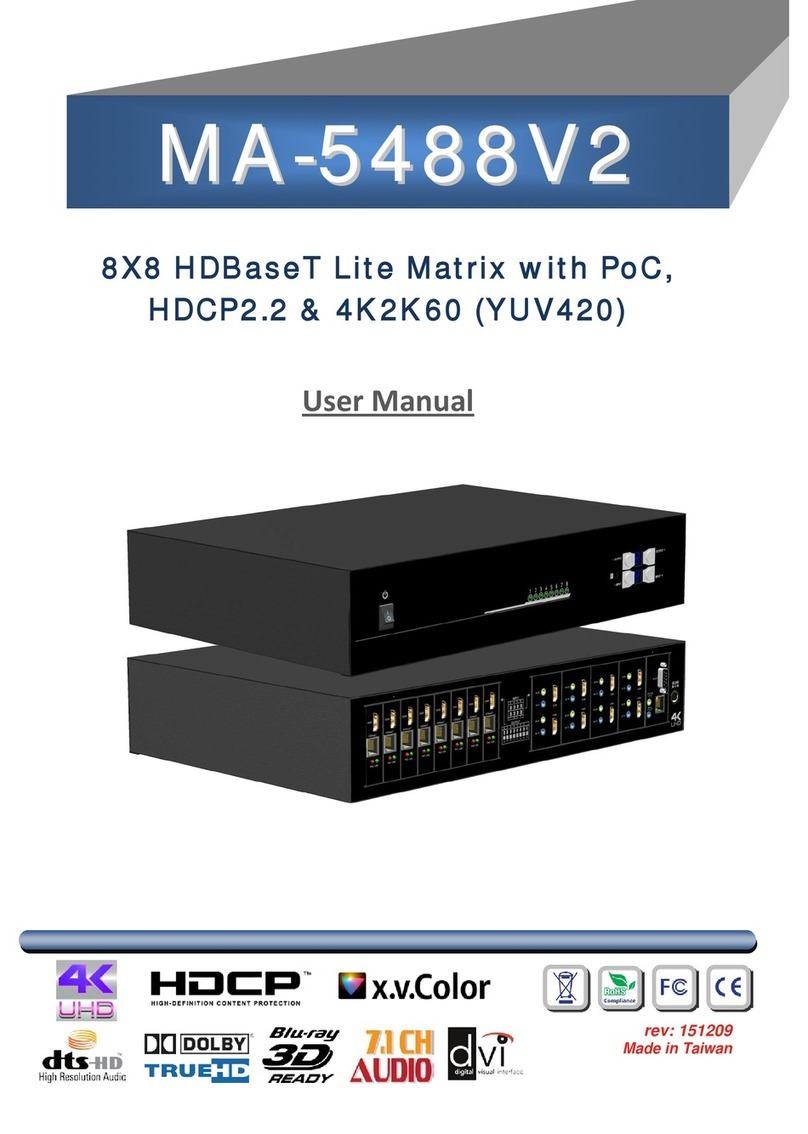
GoMax Electronics
GoMax Electronics MA-5488V2 user manual
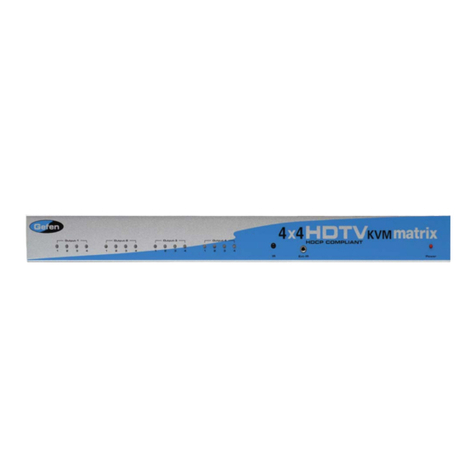
Gefen
Gefen 4x4 HDTV KVM Matrix user manual
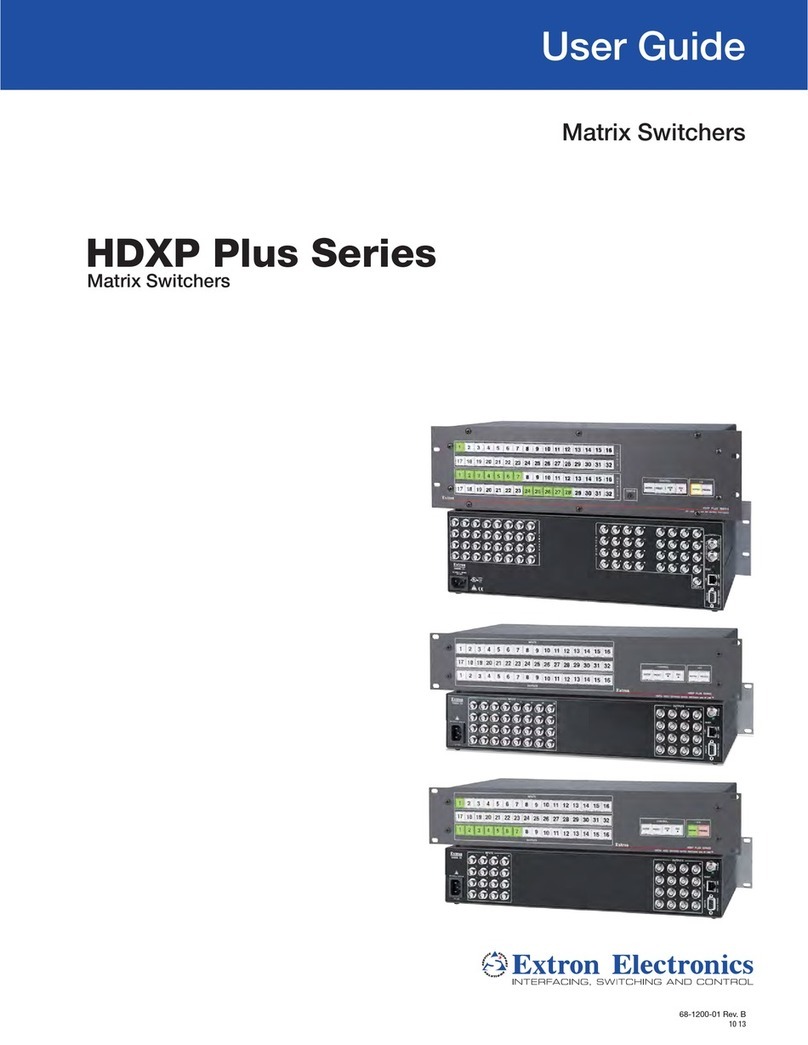
Extron electronics
Extron electronics HDXP Plus Series user guide
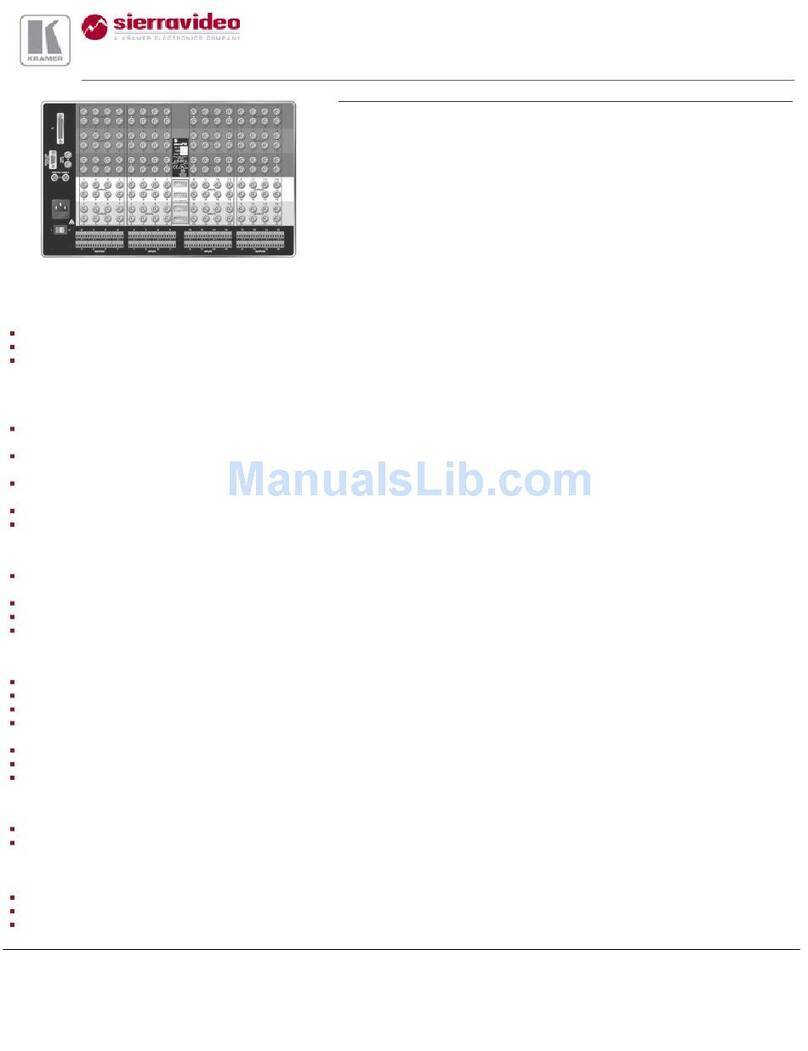
Kramer
Kramer Sierra Video 1616V3S Specifications
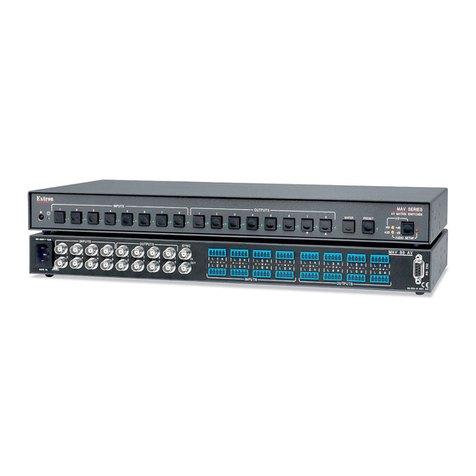
Extron electronics
Extron electronics MAV 44 Series user manual
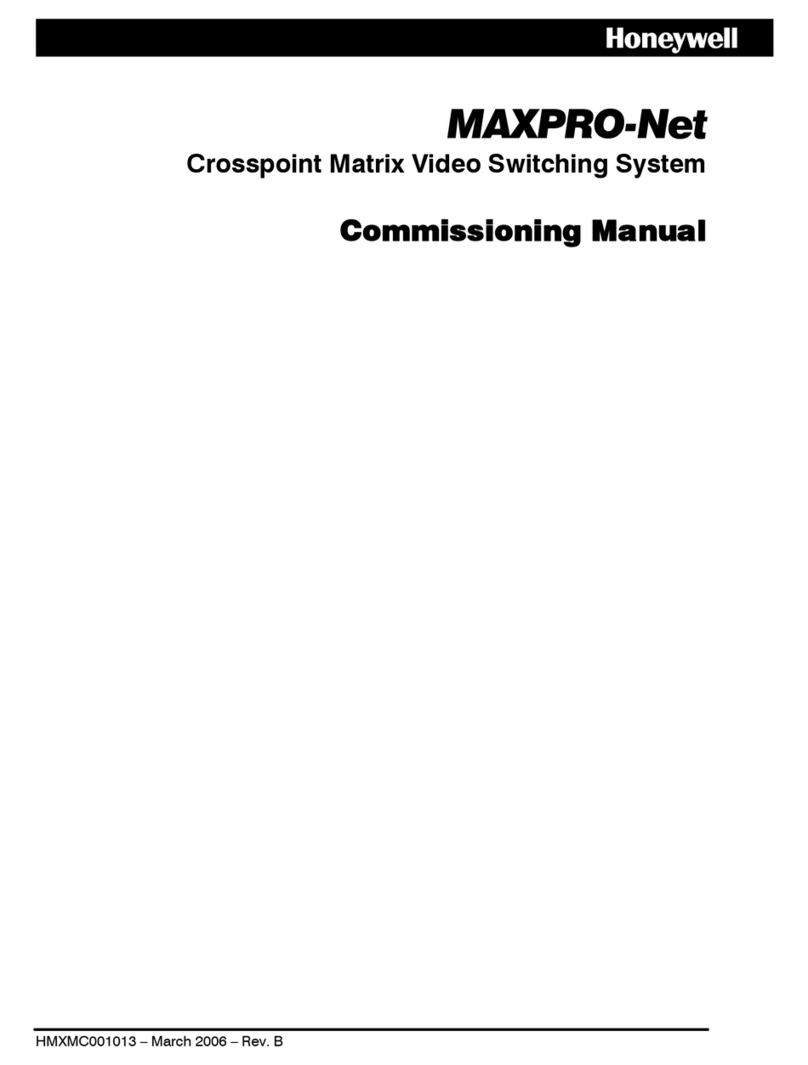
Honeywell
Honeywell MAXPRO-Net Commissioning manual

